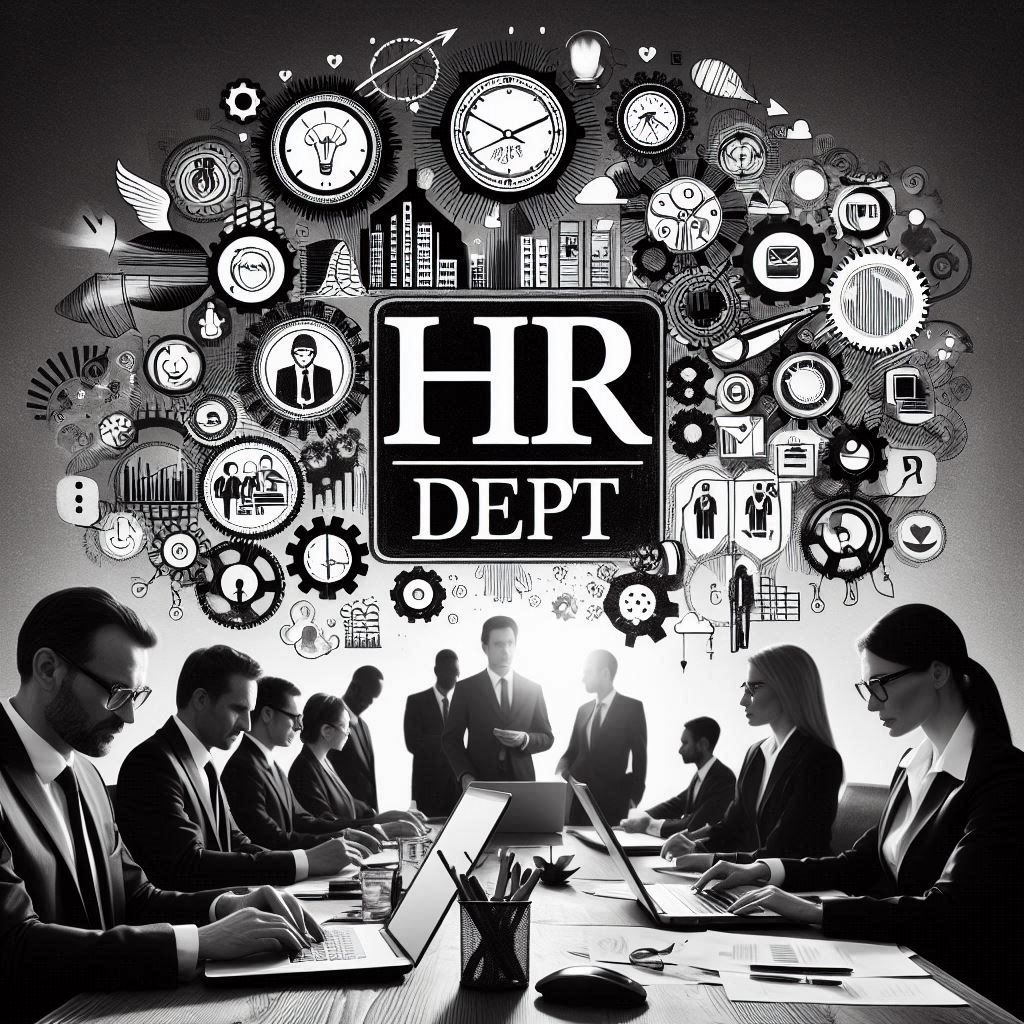
HRDept - All your efforts deserve to be rewarded
In today’s fiercely competitive job market, employee performance management is a critical factor determining a company’s success. Measurement models like KPIs (Key Performance Indicators) and OKRs (Objectives and Key Results) are widely applied, but are they truly the optimal solution?
Let’s explore these two frameworks in depth with HRDept.vn, analyze their pros and cons, and discover the best ways to optimize employee performance within organizations.
1. Understanding KPIs And OKRs
KPIs – Key Performance Indicators
KPIs are performance measurement indicators used to assess the achievement of goals at individual, departmental, or organizational levels. They are based on specific data, helping track progress toward targets.
Examples of KPIs in businesses:
| Department | Specific KPI |
|---|---|
| Sales | Monthly revenue reaches $20,000 |
| Marketing | Conversion rate ≥ 5% |
| HR | Average recruitment time ≤ 30 days |
| Production | Defect rate ≤ 2% |
OKRs – Objectives And Key Results
OKRs focus on strategic direction by setting ambitious objectives and defining key results to measure progress.
Example of OKRs:
Objective: Improve user experience on the company’s website.
Key Results:
Increase average session duration from 2 minutes to 4 minutes.
Reduce bounce rate from 50% to 30%.
Boost new account sign-ups by 20% within three months.
2. Comparing KPIs And OKRs: Which Is The Optimal Solution?
| Criteria | KPIs | OKRs |
|---|---|---|
| Purpose | Measure performance | Set strategic direction |
| Flexibility | Fixed, focused on maintenance | Flexible, focused on innovation |
| Measurement | Quantitative | Combination of quantitative and qualitative |
| Evaluation Period | Quarterly or annually | Short-term cycles (usually quarterly) |
| Application | Best for routine operations | Best for creative and innovative projects |
Key Insights:
KPIs are more suitable for structured roles such as production, customer service, and finance.
OKRs work better for teams focused on innovation such as marketing, technology, and product management.
Many companies combine both for optimal performance tracking.
3. Common Mistakes In Applying KPIs And OKRs
Regardless of whether a company uses KPIs or OKRs, incorrect application can backfire. Here are the most common mistakes:
3.1. Setting Inappropriate KPIs
KPIs are too generic, failing to align with actual job functions.
Too many KPIs, leading to a lack of focus on critical goals.
KPIs that are not measurable, making performance assessment ineffective.
“You can’t manage what you can’t measure.” – Peter Drucker
3.2. Misinterpreting OKRs
Setting unrealistic objectives, making them unattainable within a short timeframe.
Overemphasizing numerical results, neglecting the real value of work.
Lack of leadership commitment, leading to poor OKR implementation.
4. The Optimal Solution: How To Combine KPIs And OKRs?
HRDept.vn recommends integrating both methods to maximize employee performance:
4.1. Using KPIs To Support OKRs
KPIs help track daily performance and ensure task completion.
OKRs drive strategic direction and long-term development.
Example:
OKR: Expand market presence in Southeast Asia.
Supporting KPIs:
Generate at least $80,000 in revenue from the new market per quarter.
Increase conversion rate from 8% to 12%.
4.2. Regular Evaluations And Flexible Adjustments
Instead of only evaluating at the end of a cycle, conduct mid-term reviews to adjust objectives as needed.
Encourage employees to propose KPI improvements, making performance measurement more effective.
“Performance management is not about monitoring employees; it’s about empowering them to grow.” – HRDept.vn
5. HRDept.vn – Your Trusted Partner In Performance Management
At HRDept.vn, we understand that every business has its own performance management approach. Our platform not only connects companies with top talent but also helps optimize performance management through strategic solutions.
Why Choose HRDept.vn?
Seamlessly connects businesses with the right talent, ensuring high workplace efficiency from day one.
Provides a realistic candidate evaluation system, helping employers find adaptable employees.
Supports candidates before and after hiring, ensuring long-term career growth.
“Top talent doesn’t just need a job; they need an environment that fosters their development.” – HRDept.vn
6. Conclusion: KPIs And OKRs – Tools Or The Ultimate Solution?
Both KPIs and OKRs play crucial roles in employee performance management. However, there is no universal formula that fits all companies. The key takeaways are:
Identify organizational goals clearly before choosing a performance tracking method.
Combine KPIs and OKRs effectively to balance performance monitoring and innovation.
Conduct regular evaluations and make necessary adjustments, ensuring continuous employee progress and alignment with company objectives.
“Performance is not just about numbers – it’s about how an organization nurtures talent and creates real value.” – HRDept.vn
Let HRDept.vn be your partner in building a high-performance team and achieving sustainable growth!